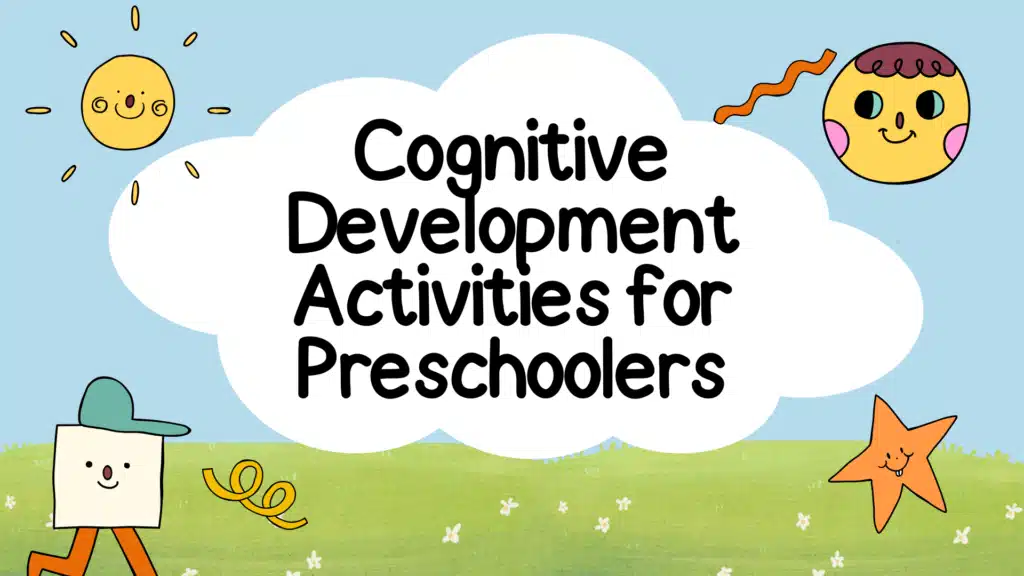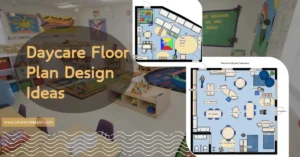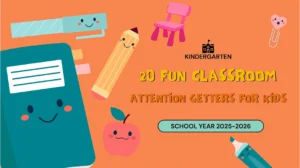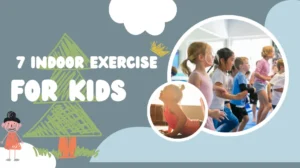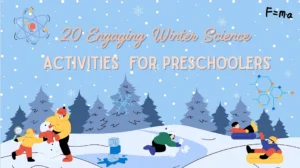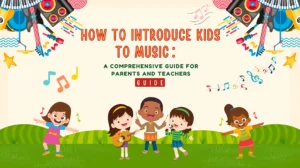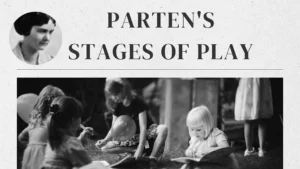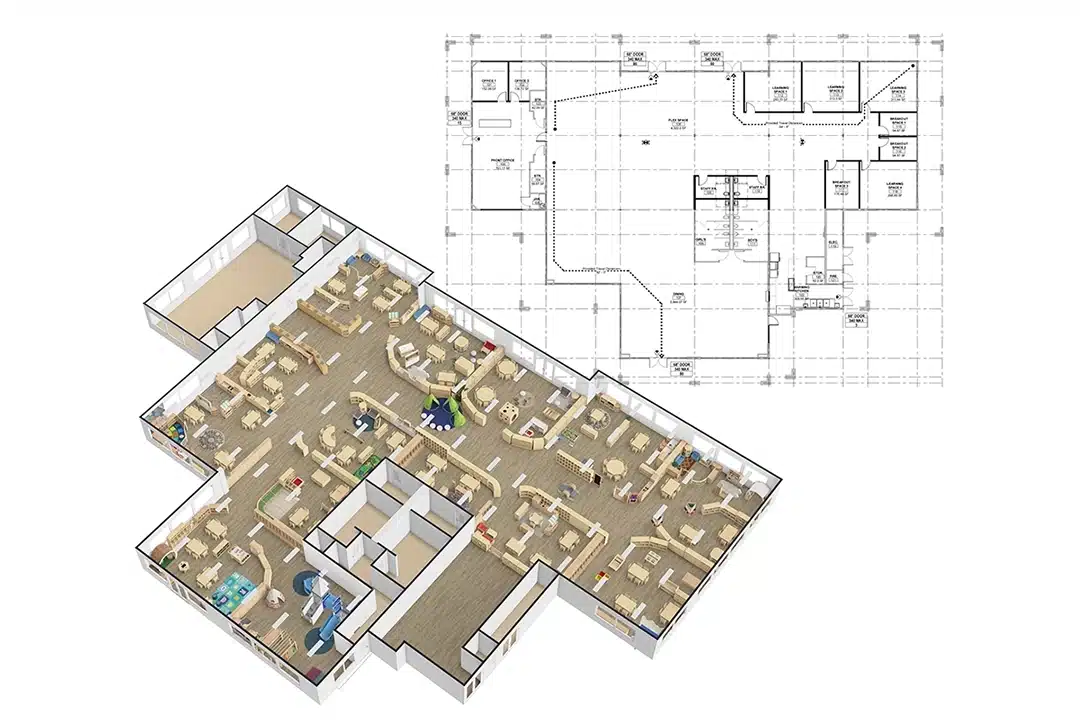Are you looking for ways to help your child think better, focus longer, and problem-solve with confidence? Struggling to find meaningful yet straightforward Cognitive Development Activities for Preschoolers that are both fun and effective? How do I make the most of this precious early learning window?
Cognitive Development Activities for Preschoolers are essential for building strong brain connections during the most critical years of a child’s growth. These hands-on games and tasks don’t just keep children entertained — they lay the groundwork for critical cognitive skills like memory, reasoning, language, and decision-making. By engaging in the right activities, preschoolers improve their ability to understand, process, and interact with the world around them — all while playing and having fun.
In this article, I’ll share 30 proven Cognitive Development Activities for Preschoolers that are easy to set up, classroom-tested, and developmentally appropriate. These ideas will help you turn everyday moments into learning adventures — whether you’re a parent, teacher, or daycare provider. Let’s dive in and turn play into power!
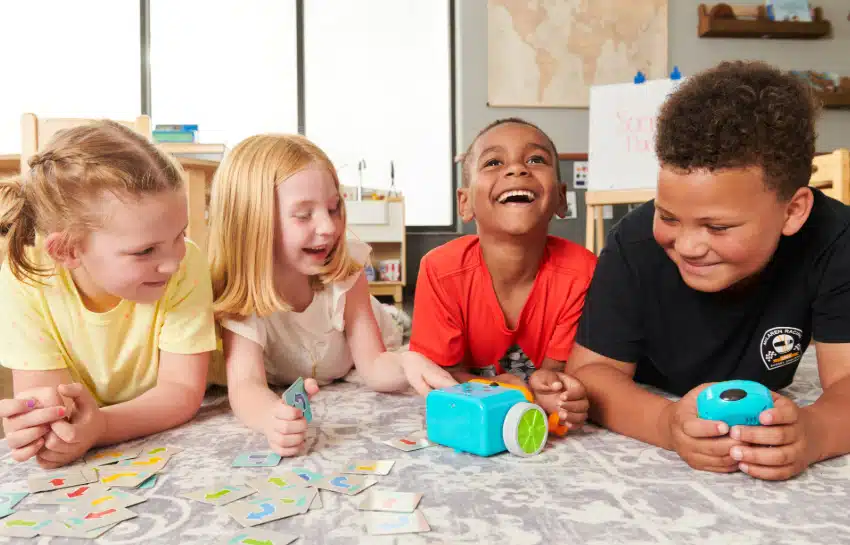
What is Cognitive Development in Early Childhood?
Cognitive development in early childhood refers to how young children think, explore, and understand the world around them. It includes a range of mental abilities, such as attention, memory, problem-solving, reasoning, and language acquisition. At the preschool stage, these abilities begin to form rapidly, laying the foundation for how children process information and make sense of their surroundings.
This phase is not just about learning ABCs or counting to ten — it’s about developing the brain’s capacity to absorb and organize knowledge. As children interact with their environment, ask questions, and try new things, their cognitive pathways are activated and strengthened. The more opportunities they have to engage in meaningful, age-appropriate experiences, the stronger those pathways become.
During this stage, children also begin to demonstrate more intentional thinking. They start to recognize patterns, follow simple instructions, understand cause and effect, and even plan actions in a basic sequence. This growth is often referred to as the development of the cognitive domain, which focuses specifically on mental processes and intellectual functions in young learners.
Why Are Cognitive Activities Important for Preschoolers?
Stimulating Brain Development in Early Childhood
The preschool years are a critical time for brain development, as children begin to form the basic mental structures that support future learning. During this stage, Cognitive Development Activities for Preschoolers play a central role in shaping how they process information, make decisions, and solve problems. These activities help strengthen attention, memory, and early reasoning abilities — all of which contribute to long-term cognitive growth in early childhood.
Building a Strong Foundation for Lifelong Learning
Children develop faster when their environment offers opportunities to explore, think, and reflect. Through puzzles, matching games, and hands-on experiments, preschoolers learn how to observe, compare, and categorize. These everyday tasks are real examples of cognitive development that form the core of more advanced academic skills. Well-designed cognitive activities don’t just entertain — they create a framework for logical thinking that lasts a lifetime.
Encouraging Independence and Self-Confidence
When children engage in cognitive tasks and complete them successfully, they gain confidence in their thinking abilities. Cognitive Development Activities for Preschoolers help promote independence by allowing children to test ideas, make decisions, and correct their own mistakes. These small achievements build self-esteem and create a positive attitude toward learning. For children at varying levels of cognitive development, such experiences can be transformative.
Supporting Language and Thinking Together
Many cognitive activities also enhance verbal communication. Tasks like storytelling, question games, or describing a scene allow children to connect language with logic. This interplay between speech and thought is essential to both language and cognitive development. When children are encouraged to talk about what they see, think, or feel, they develop stronger connections between language, memory, and reasoning.
Preparing Preschoolers for Academic and Social Success
The skills developed through cognitive play carry over into classroom settings. Children who have practiced memory, sequencing, and problem-solving are often better prepared for structured learning environments. That’s why Cognitive Development Activities for Preschoolers are not just practical — they’re essential for early childhood cognitive development. These experiences support both academic readiness and the ability to engage socially and emotionally with peers.
Adapting to Each Child’s Developmental Needs
Not all children develop at the same pace, which is why flexibility in activity design is essential. The best cognitive activities for preschoolers are those that can be adjusted to suit different skill levels, learning styles, and interests. Whether a child is just beginning to understand patterns or is ready to solve more advanced puzzles, offering the right challenge helps them grow. This responsive approach is crucial when working with children at different stages of cognitive development.
Cognitive Development Activities for Preschoolers: Memory & Focus Games Activities
Activity 1: Matching Memory Cards
Overview:
This classic matching game strengthens short-term memory, attention span, and visual recognition. It’s one of the most fundamental cognitive development activities for preschoolers, as it encourages children to stay focused while remembering the location of different images. It’s also a great activity to develop patience and turn-taking in group settings.
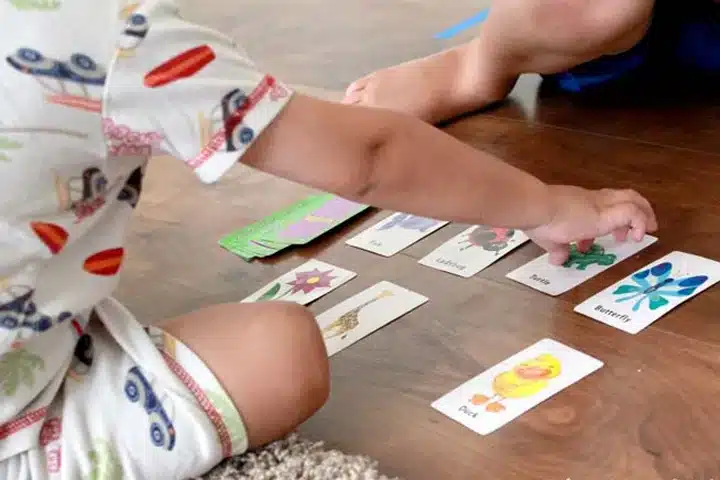
Materials Needed:
- 12–24 picture cards in matching pairs (can be homemade or store-bought)
- A flat surface like a table or mat
Set Up:
Shuffle the cards and lay them face down in a grid format. Ensure all cards are evenly spaced and that children can reach them easily.
Instructions:
Children take turns flipping over two cards at a time. If the images match, they keep the pair and go again. If not, they flip the cards back, and the next player continues. Encourage children to focus and remember previous card positions. Start with 6–8 pairs and increase difficulty over time to match their level of cognitive development. This game improves both working memory and visual recall, essential aspects of early childhood cognitive development.
Activity 2: What’s Missing?
Overview:
“What’s Missing?” is a fun and engaging game designed to boost observation and recall. It’s a simple example of how Cognitive Development Activities for Preschoolers can be both playful and educational.
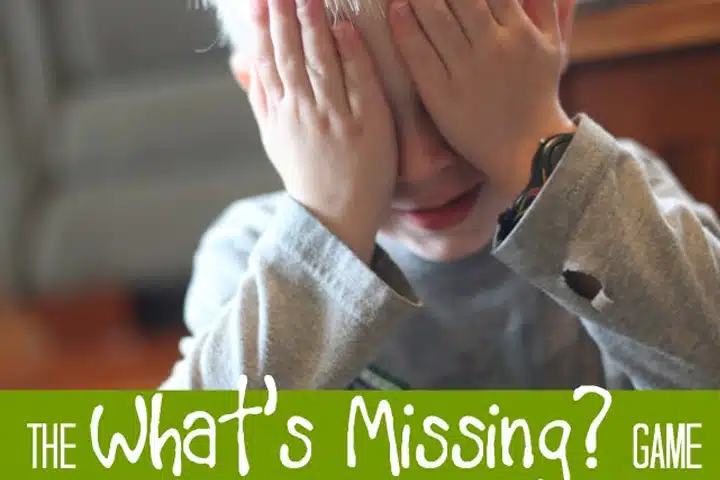
Materials Needed:
- 5–10 familiar items (e.g., toy car, crayon, spoon, ball)
- A cloth or scarf to cover the objects
Set Up:
Place all objects in a line on a table or floor. Allow children time to observe and name each one.
Instructions:
After 30 seconds of observation, ask the child to close their eyes. Remove one item, cover the rest, and ask, “What’s missing?” As children improve, increase the number of items or remove more than one at a time. You can also switch the arrangement to make it more challenging. This activity supports memory recall, attention control, and observation — all vital components of cognitive development of preschoolers.
Activity 3: I Spy with Colors and Shapes
Overview:
“I Spy” is an excellent verbal memory game that promotes concentration and visual scanning. By engaging children in observation and deductive reasoning, it naturally integrates both language and cognitive development. It’s flexible enough to be played anywhere — at home, in class, or outdoors.
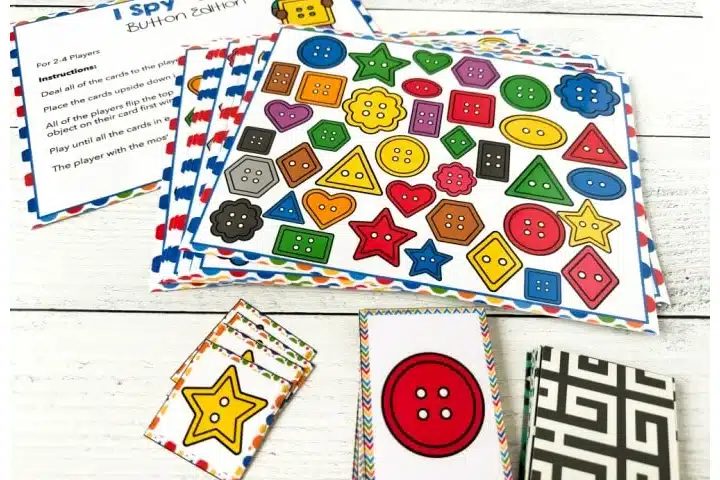
Materials Needed:
- A variety of colorful objects around the room
- Optional: shape or color flashcards for extra support
Set Up:
Identify a play area with visible, accessible objects of different shapes, colors, and sizes.
Instructions:
Say, “I spy with my little eye something that is red and round.” The child then looks around and guesses the object. If they struggle, offer more clues. To advance the game, use adjectives like texture (“bumpy,” “soft”) or categories (“used in the kitchen”). This activity supports cognitive processing, descriptive vocabulary, and sustained focus — all necessary for preschool mental development.
Activity 4: Sound Sequence Claps
Overview:
This rhythm-based game encourages children to listen carefully and repeat sound patterns. Among all Cognitive Development Activities for Preschoolers, it’s especially good for developing focus through auditory play.
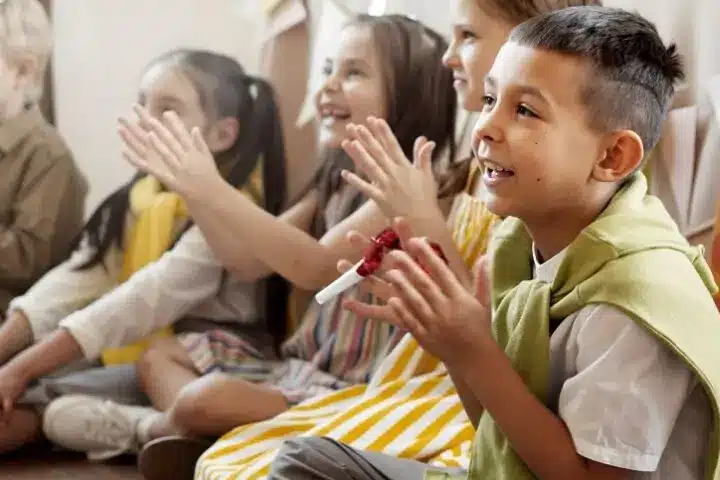
Materials Needed:
- Just your hands (or simple instruments like tambourines or sticks)
Set Up:
Prepare a list of simple rhythmic patterns to clap (e.g., clap-clap-pause-clap) and practice them yourself first.
Instructions:
Clap a short pattern and ask the child to repeat it exactly. Gradually increase the complexity as their skills grow. You can also use verbal patterns (e.g., “tap, stomp, clap”) or use musical instruments to add variety. This activity targets working memory, a key aspect of cognitive development in children, especially in preparation for formal learning.
Activity 5: Freeze and Focus Dance
Overview:
This game blends physical movement with impulse control and auditory attention. By engaging the body and brain simultaneously, it improves both motor coordination and cognitive flexibility, a critical part of mental development in early childhood. It’s especially effective for children who have trouble sitting still or focusing.
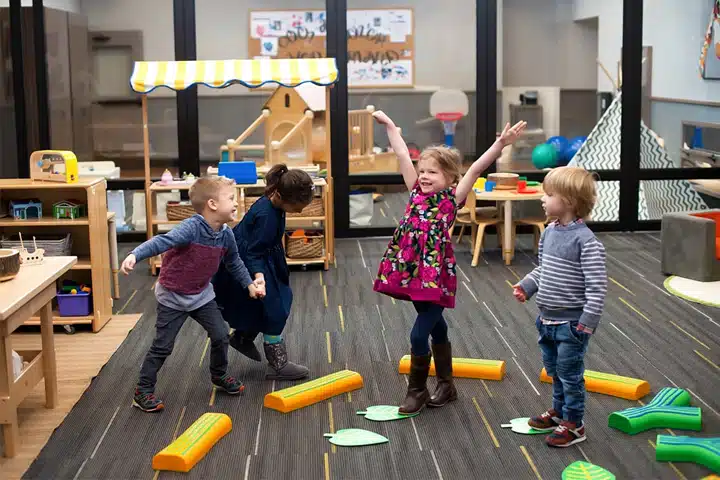
Materials Needed:
- A music player or phone
- Open space for movement
Set Up:
Create a safe area where children can move freely without bumping into objects.
Instructions:
Play upbeat music and encourage children to dance. Randomly pause the music and shout “Freeze!” Children must stop moving instantly and hold their position. Add variations like “Freeze in a silly pose” or “Freeze like a statue.” This activity helps children strengthen attention, body control, and adaptability — ideal for cognitive development activities for 3–5-year-olds.
Activity 6: Tray Observation Game
Overview:
This is a great cognitive activity for practicing visual memory, object categorization, and attention to detail. It’s often used in Montessori and Reggio-inspired classrooms to support preschool cognitive development through play-based memory training.
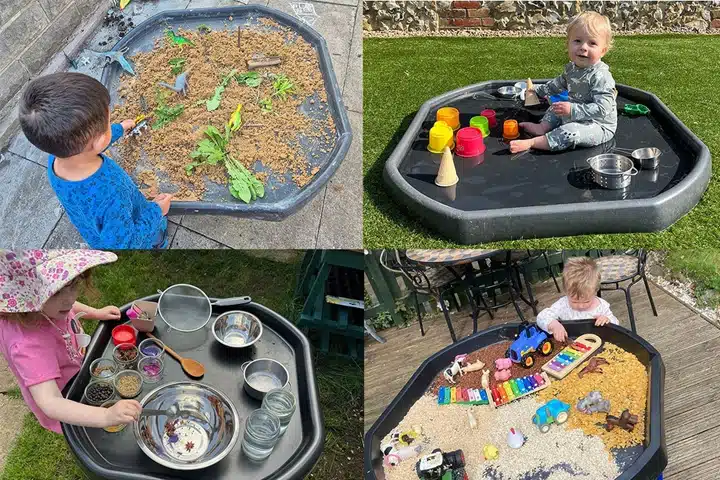
Materials Needed:
- A tray
- 8–10 small objects (e.g., key, spoon, eraser, coin, toy animal)
- A towel or cloth
Set Up:
Arrange the items on the tray and allow the child to observe them for 30–60 seconds. Let them name or describe each item.
Instructions:
Cover the tray and ask the child to name as many items as they can remember. Alternatively, remove one or two items before revealing the tray again and ask what’s missing. You can also use themed sets (kitchen tools, animals, school supplies) to strengthen categorization skills and vocabulary development. This game supports cognitive development, such as memory, naming, and logical deduction.
Cognitive Development Activities for Preschoolers: Problem-Solving Activities
Activity 7: Puzzle Time
Overview:
Solving puzzles helps children develop spatial reasoning, critical thinking, and hand-eye coordination. It’s a classic and practical cognitive development activity that encourages perseverance and logic. Completing puzzles gives preschoolers a sense of accomplishment and teaches them how to approach challenges step-by-step.
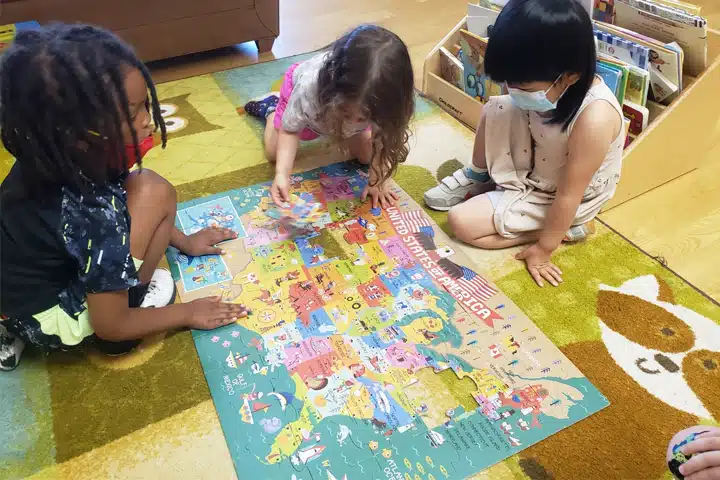
Materials Needed:
- Age-appropriate jigsaw puzzles (6–20 pieces depending on the child’s level)
- Puzzle board or mat
Set Up:
Choose a puzzle that suits the child’s developmental stage. Lay out the pieces and clear a workspace.
Instructions:
Show children how to find the edge pieces first, then help them group by color or image. As they work, ask guiding questions like, “What piece might fit here?” This activity builds cognitive skills for preschoolers, particularly in sequencing and visual-spatial reasoning.
Activity 8: Tower Challenge
Overview:
This exciting construction activity is one of the most effective Cognitive Development Activities for Preschoolers when it comes to promoting planning, reasoning, and trial-and-error learning. As children attempt to build the tallest and most stable tower, they naturally explore concepts like balance, cause and effect, and structural design — all while enhancing their problem-solving skills.
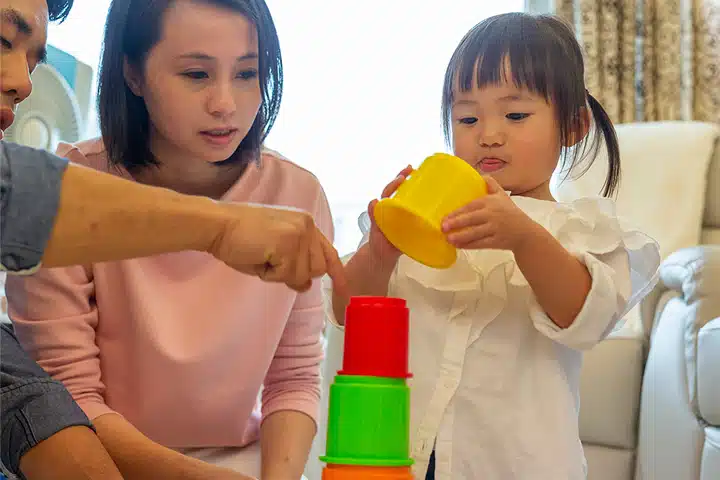
Materials Needed:
- Building blocks (wood, foam, or plastic)
- Optional: timer, measuring tape
Set Up:
Place the blocks on the floor or table and challenge the children to build the tallest tower possible.
Instructions:
Ask children to stack the blocks and observe what makes the tower stable or wobbly. You can turn it into a competition: “Can you build one taller than last time?” This game encourages trial-and-error thinking and strengthens cognitive motor skills through precise hand movements.
Activity 9: Story Sequence Cards
Overview:
Sequencing cards help children grasp the concept that events follow a logical order — a vital skill in both language development and cognitive growth. As a structured storytelling task, it supports logical reasoning, memory recall, and narrative comprehension — making it a core example of impactful Cognitive Development Activities for Preschoolers.
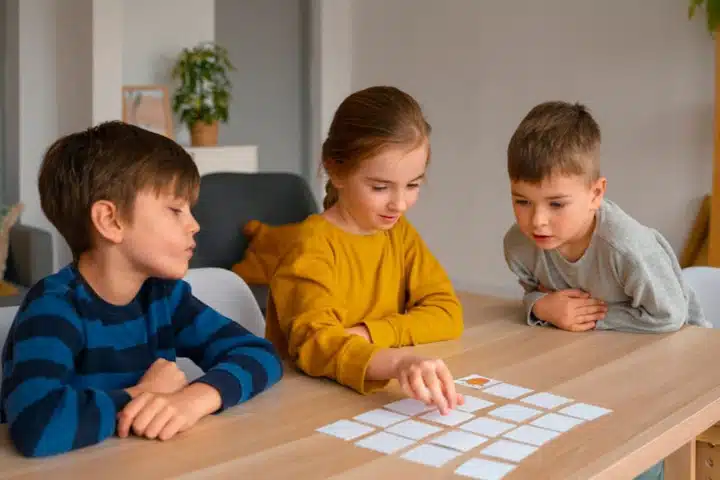
Materials Needed:
- Printable story sequence cards (e.g., brushing teeth, planting a seed, going to school)
- Flat table or magnetic board
Set Up:
Mix the cards and place them in a pile. Each story should contain 3–5 cards.
Instructions:
Ask children to put the cards in the correct order and explain what’s happening in each picture. For a challenge, give the cards without showing the complete set and have them predict the ending. This activity helps build cognitive awareness and teaches how to organize thoughts logically.
Activity 10: Mystery Bag Guessing Game
Overview:
This tactile exploration game boosts deductive reasoning, sensory discrimination, and verbal description — all while being a hands-on form of Cognitive Development Activities for Preschoolers. It’s ideal for strengthening the connection between touch, vocabulary, and logical thinking.
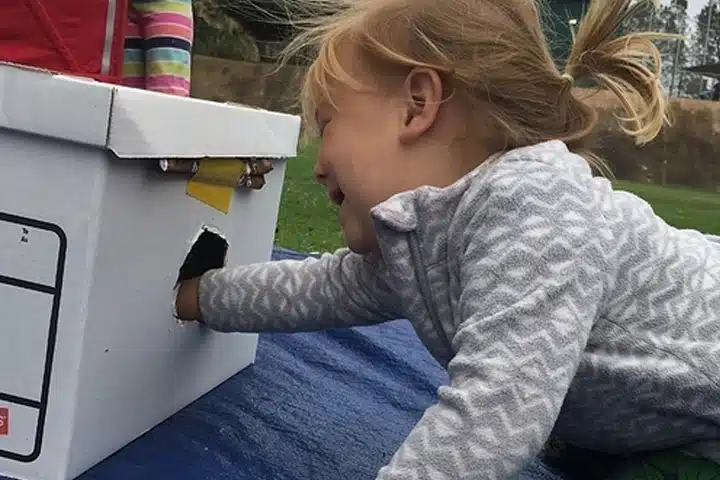
Materials Needed:
- Opaque bag
- Small items with distinct shapes or textures (toy car, sponge, spoon, key, etc.)
Set Up:
Place one object in the bag at a time without showing the child.
Instructions:
Let the child reach into the bag and feel the item without looking. Encourage them to describe what they feel (“It’s smooth,” “It has wheels”) and then guess what it is. This activity improves problem-solving, descriptive vocabulary, and critical thinking.
Activity 11: Build a Bridge
Overview:
Combining creativity with structure, this hands-on STEM challenge strengthens both engineering thinking and cognitive development in preschoolers. Children plan, build, test, and revise their bridge designs — engaging in critical higher-order thinking and exploration of basic physics.
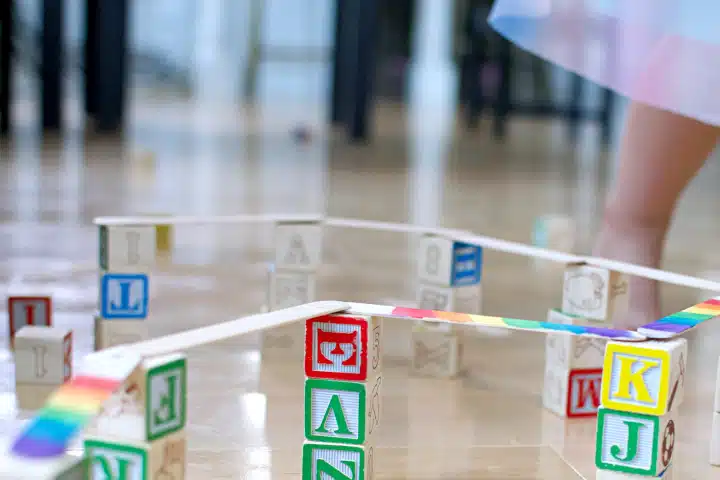
Materials Needed:
- Straws, craft sticks, tape, paper, blocks
- Small toy car or object to test the bridge
Set Up:
Provide materials and show an image of a real bridge for inspiration.
Instructions:
Challenge children to build a bridge that can support a toy car. They’ll need to plan their structure, test its strength, and revise if it collapses. Ask them what worked and what didn’t to promote reflection. This encourages higher-order thinking and playfully introduces basic engineering.
Activity 12: Maze Tracing
Overview:
Tracing a maze improves spatial orientation, planning, and perseverance — all essential components of cognitive development activities for preschoolers. It also supports fine motor control.
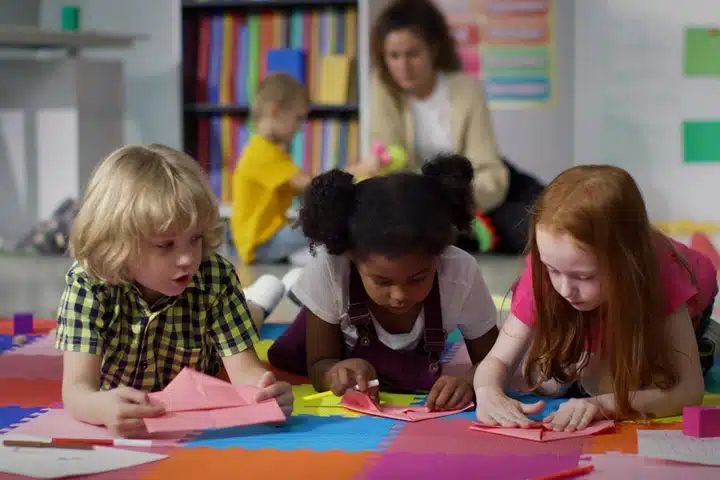
Materials Needed:
- Printable mazes (easy to moderate difficulty)
- Crayons or markers
Set Up:
Print several mazes at varying levels and provide crayons at a table or activity station.
Instructions:
Ask children to guide their crayons from the start to the finish of the maze without crossing lines. Offer encouragement if they make mistakes and let them try again. This activity builds concentration, problem-solving, and directional awareness.
Cognitive Development Activities for Preschoolers: Language & Communication Games
Activity 13: Story Circle Pass
Overview:
This collaborative storytelling activity boosts creativity, listening, sequencing, and verbal fluency — all key parts of cognitive development in early childhood. Children must recall what others have said and build on it, making it an engaging exercise in both comprehension and communication.
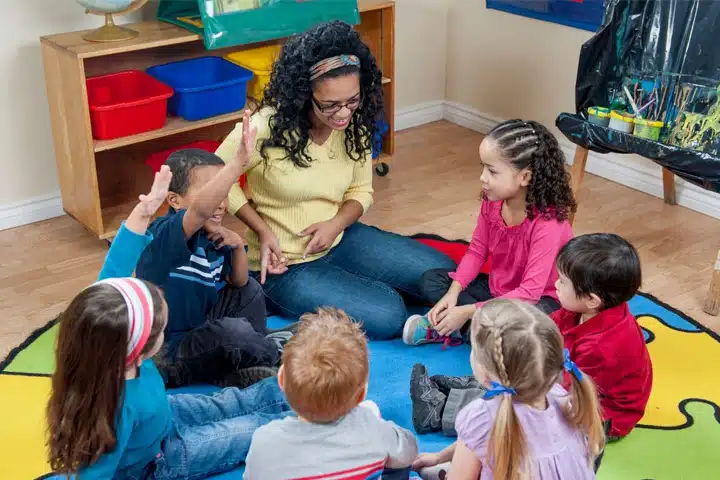
Materials Needed:
- A storytelling prop (e.g., soft toy or ball)
- A group of children seated in a circle
Set Up:
Have all children sit in a circle. Explain that each person will add a line to a story.
Instructions:
Start the story with one sentence (“Once upon a time, a cat got lost in a forest…”). Pass the prop to the next child, who adds to the story. Continue around the circle until a full story is told. This game supports language development, memory, and imagination while reinforcing narrative structure — a classic cognitive development activity for preschoolers.
Activity 14: Rhyming Basket
Overview:
A phonemic awareness game that sharpens sound recognition and builds early reading skills. By connecting objects with rhyming words, children practice listening, matching, and categorizing — core elements of language and cognitive development.
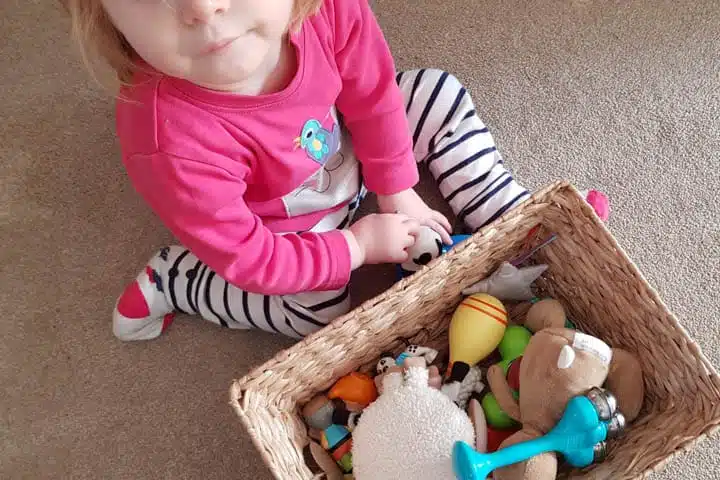
Materials Needed:
- A basket
- Small objects or picture cards (e.g., cat, hat, pen, hen, book, hook)
Set Up:
Place all objects in a basket. Review each item’s name with the children.
Instructions:
Call out a word (e.g., “hat”) and ask children to find something in the basket that rhymes with it. You can add complexity by asking children to create rhymes for new words. This activity boosts auditory memory, pattern recognition, and early literacy — all key to cognitive development in childhood.
Activity 15: Describe and Guess
Overview:
This vocabulary-building game encourages children to use descriptive language, make guesses, and listen carefully. It’s one of the most interactive Cognitive Development Activities for Preschoolers that blends verbal expression with critical thinking.
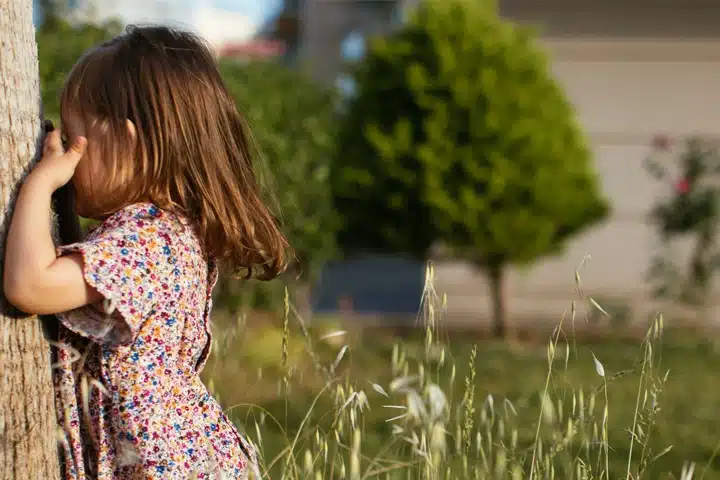
Materials Needed:
- Small familiar objects hidden in a bag or box
- Optional: blindfold
Set Up:
Place several items in a bag. One child becomes the “describer,” and the others are “guessers.”
Instructions:
The describer pulls out an item (without showing it) and describes it using size, color, texture, and function (“It’s round, red, and you eat it”). The others guess what it is. Rotate roles so every child has a turn. This game enhances cognitive and language processing, vocabulary depth, and confidence in speaking.
Activity 16: Puppet Show Conversations
Overview:
Puppets allow children to explore dialogue, storytelling, and character creation in a stress-free way. As one of the most imaginative Cognitive Development Activities for Preschoolers, it helps them build verbal fluency and social communication.
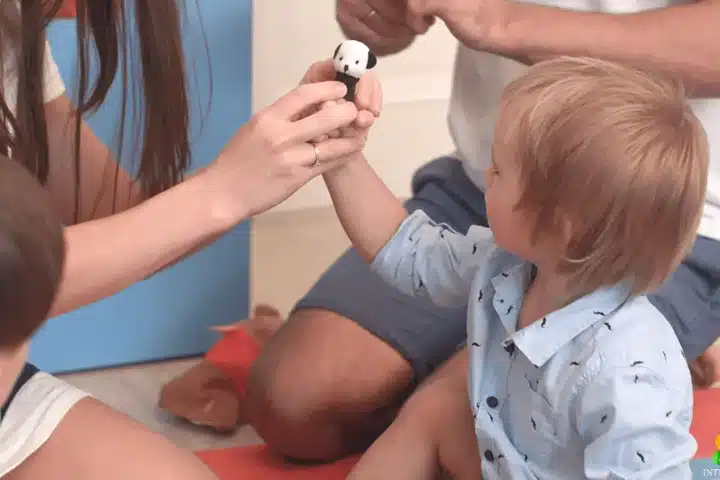
Materials Needed:
- Hand puppets or paper bag puppets
- A small puppet stage or table
Set Up:
Let children create or choose their puppets. Prepare a few open-ended story prompts if needed.
Instructions:
Encourage kids to put on short puppet shows in pairs or groups. Prompt them with situations (“Going to the doctor,” “Making a new friend”) and let them improvise conversations. This activity boosts verbal fluency, narrative structure, and cognitive flexibility.
Activity 17: Who Am I?
Overview:
A guessing game that involves logic, deductive reasoning, and verbal clues — excellent for enhancing cognitive development examples in early childhood.
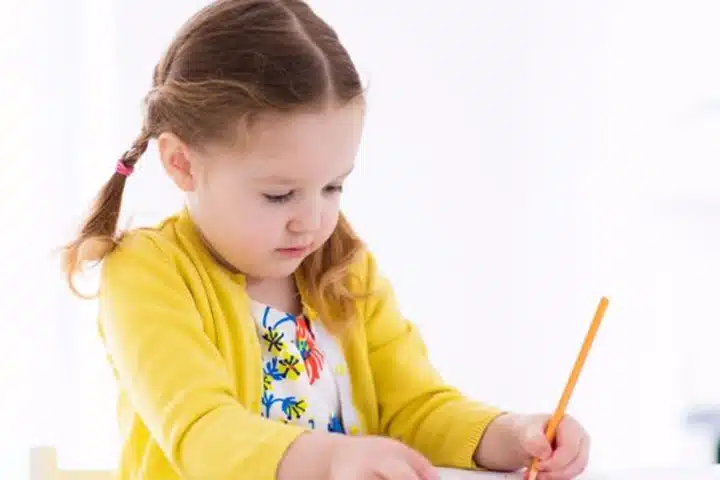
Materials Needed:
- Picture cards or simple labels (animals, jobs, cartoon characters)
- A headband or sticky notes
Set Up:
One child picks a card without seeing it and wears it on their forehead.
Instructions:
The child asks yes/no questions to guess what or who they are (“Am I an animal?”, “Do I fly?”). The group answers the questions. This game promotes strategic questioning, vocabulary, and higher-order thinking, making it one of the best verbal cognitive tasks for preschoolers.
Activity 18: Follow the Story Map
Overview:
Story maps help children visually understand the parts of a story — beginning, middle, end, characters, and setting. It supports comprehension and planning, key parts of cognitive development in early childhood.
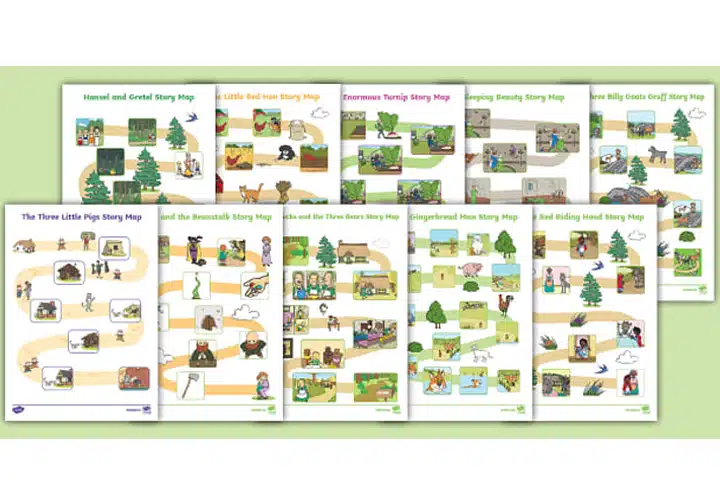
Materials Needed:
- Printed story maps or blank paper
- Markers or crayons
- A short picture book
Set Up:
Choose a story familiar to the group (e.g., “The Very Hungry Caterpillar”) and prepare story maps for each child.
Instructions:
Read the story aloud. Then, help children fill in the story map by drawing or writing the setting, main events, and ending. This reinforces narrative understanding and cognitive sequencing — building a solid base for future reading and writing skills.
Cognitive Development Activities for Preschoolers: Movement & Motor Skill Integration
Activity 19: Obstacle Course with Directions
Overview:
This activity combines physical movement with multi-step instructions, enhancing listening, sequencing, and problem-solving. It supports cognitive and motor skill development by encouraging children to process verbal commands while navigating space.
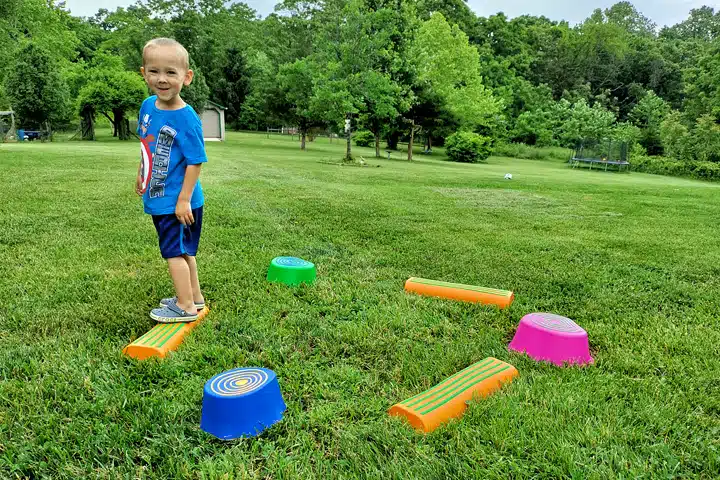
Materials Needed:
- Cones, chairs, ropes, tunnels, cushions, etc.
- Space indoors or outdoors
Set Up:
Design a simple obstacle course using available materials. Include actions like crawling under, hopping over, balancing, or zigzag walking.
Instructions:
Give verbal directions in sequence: “First crawl under the chair, then hop over the rope, then touch the red cone.” Children must remember and complete each step in order. You can increase difficulty by adding more steps. This exercise targets cognitive processing, memory, and gross motor control — a fantastic all-in-one cognitive development activity for preschoolers.
Activity 20: Move Like an Animal
Overview:
This imaginative movement game supports body awareness, pattern imitation, and memory recall. Children learn to associate body movements with specific ideas, which enhances cognitive flexibility and coordination.
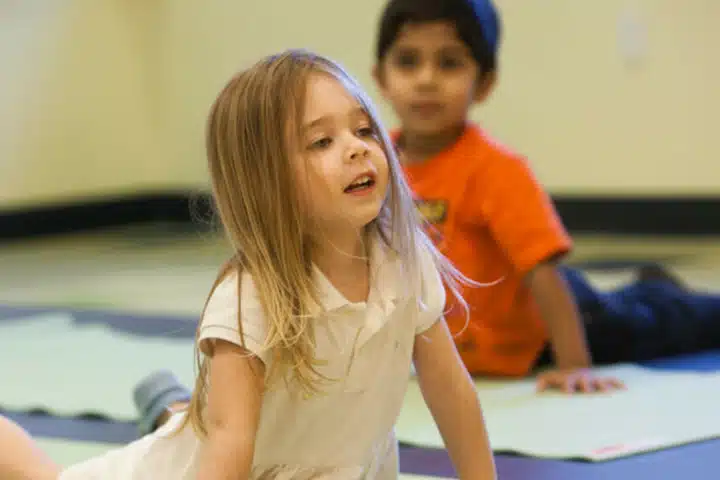
Materials Needed:
- Picture cards of animals (optional)
- Open play space
Set Up:
Prepare a few animal examples and demonstrate them first.
Instructions:
Call out an animal and have children imitate its movement (e.g., hop like a frog, waddle like a penguin, crawl like a crab). You can turn it into a “guess the animal” game using movement alone. This activity promotes cognitive and physical development while encouraging imaginative play.
Activity 21: Jump to the Answer
Overview:
A high-energy movement game that reinforces early learning concepts like numbers, shapes, or letters while improving focus and cognitive reaction time.
Materials Needed:
- Flashcards or large paper sheets with letters, numbers, or shapes
- Tape
Set Up:
Spread the cards or papers on the floor in an open area.
Instructions:
Call out a question: “Jump to the number 5!” or “Find the square!” Children must identify and jump to the correct card. This game strengthens quick decision-making, auditory processing, and motor coordination — all essential for cognitive development in early childhood.
Activity 22: Dance and Freeze
Overview:
Dance and Freeze enhances attention control, self-regulation, and auditory processing. It’s ideal for preschoolers with high energy and helps them practice following cues, an important part of cognitive self-control.
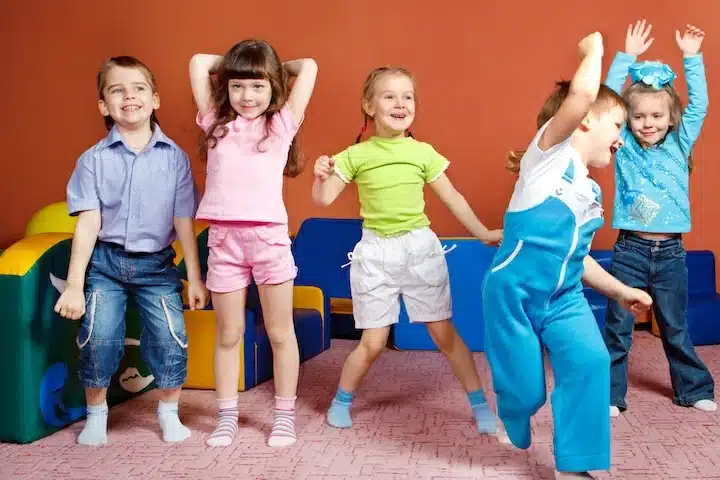
Materials Needed:
- Music player
- Open space
Set Up:
Create a dance-friendly space. Ensure children can move freely without bumping into anything.
Instructions:
Play upbeat music and let the children dance. Randomly stop the music and say “Freeze!” Children must immediately stop and hold their position. You can add variations like “Freeze like a superhero” or “Freeze on one leg.” This activity builds cognitive motor skills and behavioral inhibition.
Activity 23: Follow the Leader (With a Twist)
Overview:
This game builds sequencing, memory, and movement coordination. It’s a fun twist on the traditional Follow the Leader but adds verbal instructions for language and cognitive development.
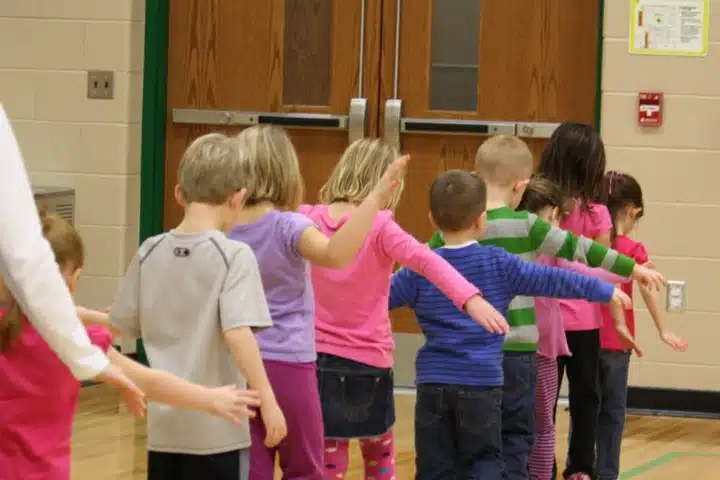
Materials Needed:
- None
- Optional: hats or props for role-play
Set Up:
Assign one child as the leader, and the rest as followers. Start with a simple movement routine.
Instructions:
The leader performs a movement and names it (“Jump up and down!”). The others must repeat both the movement and the phrase. You can create sequences with 3–4 steps and test memory by asking them to repeat it later. This promotes memory retention, auditory processing, and physical coordination.
Activity 24: Shape Hopscotch
Overview:
This combines movement with shape and color recognition. Children strengthen spatial awareness and categorization — ideal for reinforcing classroom concepts through play.
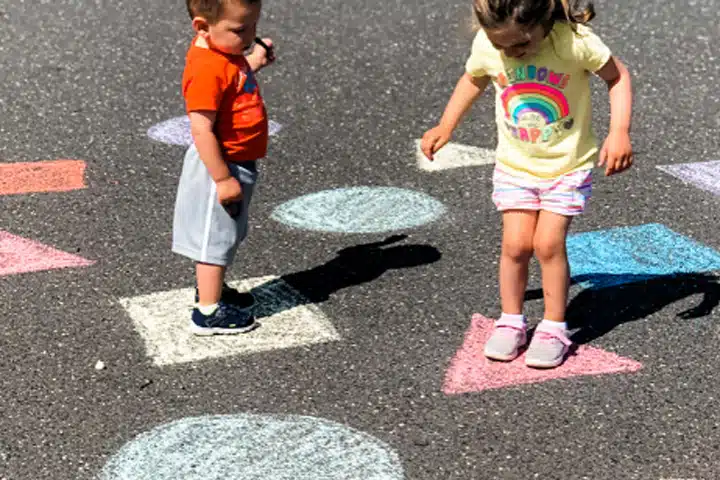
Materials Needed:
- Chalk (for outdoor play) or colored tape (for indoor use)
- Shapes or numbers drawn on the floor
Set Up:
Draw a hopscotch grid with various shapes or numbers inside each block.
Instructions:
Call out a shape or number, and ask children to hop to the correct one. Increase the challenge by using sequences: “Hop to circle, then triangle.” This activity integrates cognitive development examples, like pattern recall, with gross motor control.
Cognitive Development Activities for Preschoolers: Sensory Play & Exploration
Activity 25: Sensory Bin Sorting
Overview:
Sensory bins are a classic Montessori-style activity that support cognitive development in early childhood through tactile play. Sorting objects within the bin encourages classification, fine motor skills, and visual discrimination — all foundational for logical thinking.
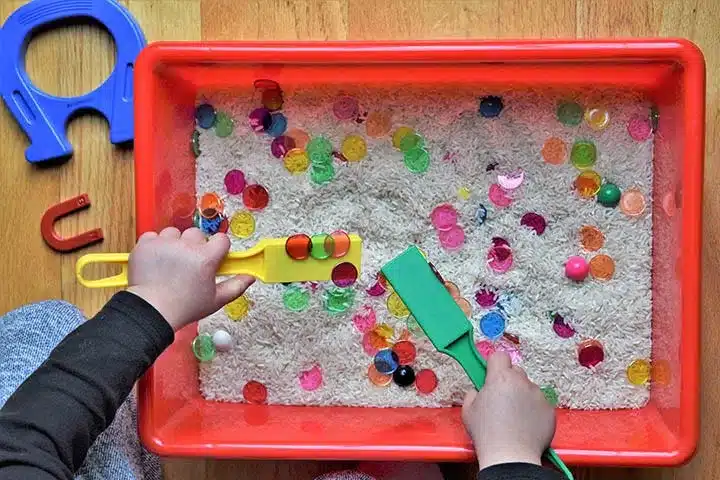
Materials Needed:
- A plastic bin
- Dry fillers (rice, beans, sand, pasta)
- Small toys or objects to sort (buttons, animals, pom-poms)
- Small cups or bowls for sorting
Set Up:
Fill the bin with your chosen sensory material and mix in sorting items of different colors or shapes.
Instructions:
Ask the child to find and sort the items by category (e.g., by color, size, or shape). Offer scoops or tweezers to encourage fine motor use. This cognitive development activity for preschoolers supports attention, memory, and decision-making, while also helping with emotional regulation through calming tactile input.
Activity 26: Smell & Match Game
Overview:
This game helps children strengthen their sense of smell and match scents to familiar objects. It builds cognitive awareness and vocabulary while encouraging children to think about abstract concepts like scent — a less commonly used but powerful sensory tool in early childhood cognitive development.
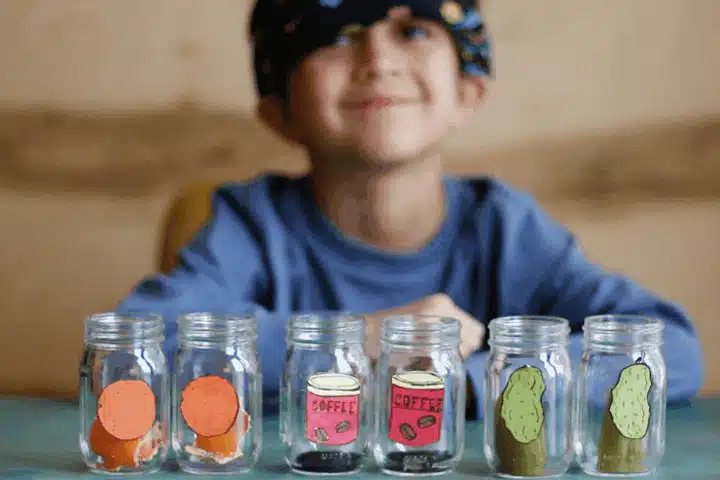
Materials Needed:
- Cotton balls or scent jars
- Familiar scents (vanilla, orange peel, cinnamon, mint, coffee, soap)
- Matching picture cards of the scent sources
Set Up:
Place each scent in a labeled container. Lay out the picture cards separately.
Instructions:
Let children smell each container and match it with the correct image. Ask follow-up questions like, “Where have you smelled this before?” or “What does it remind you of?” This strengthens both sensory memory and verbal association.
Activity 27: Water Play Experiments
Overview:
Water play allows preschoolers to explore cause and effect, volume, and basic physics in a hands-on way. These experiments also support problem-solving, categorization, and scientific observation — all of which reinforce cognitive growth.
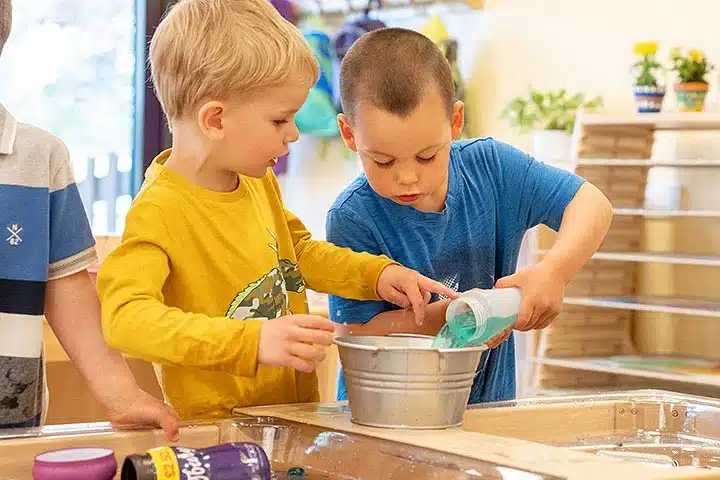
Materials Needed:
- Water table or tub
- Cups, funnels, sponges, plastic bottles, small toys
Set Up:
Fill the table with water and place materials nearby. Optional: food coloring or ice cubes for variety.
Instructions:
Encourage children to pour, squeeze, and experiment. Ask open-ended questions like, “What happens when you squeeze the sponge?” or “Why did that toy float?” This is a great way to explore cognitive development examples in real-world situations using basic STEM concepts.
Activity 28: Mystery Texture Box
Overview:
This guessing game activates tactile learning and builds descriptive vocabulary and logical reasoning, both crucial to cognitive and language development.
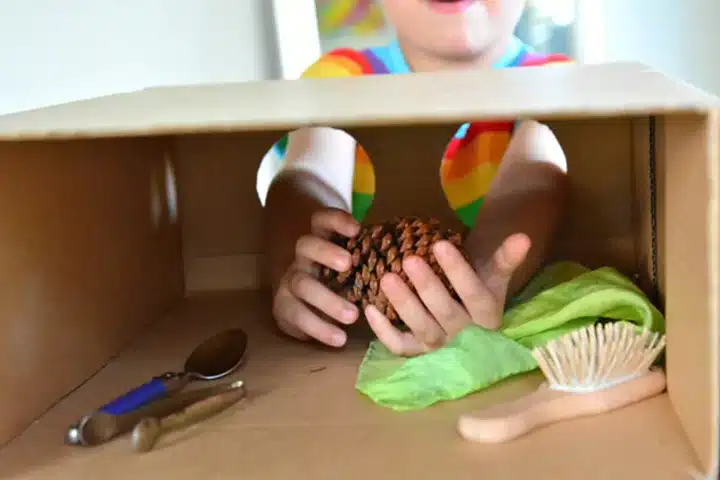
Materials Needed:
- A cardboard box with a hand hole
- A mix of textured objects (sandpaper, sponge, cotton ball, rock, feather, etc.)
Set Up:
Place one item inside the box at a time. Make sure children can’t see what’s inside.
Instructions:
Let the child reach inside and feel the object. Ask them to describe what they think before guessing what it is. You can prompt with questions like, “Is it soft? Rough? Cold?” This strengthens cognitive processing, sensory recognition, and verbal articulation.
Activity 29: Color Mixing Lab
Overview:
A fun art-based science activity where children learn about color blending, cause-and-effect, and experimentation, all of which support cognitive development of preschoolers through exploration.
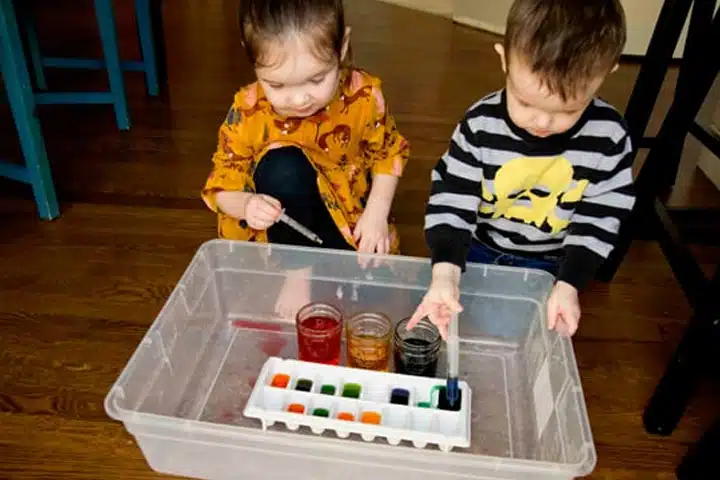
Materials Needed:
- Clear plastic cups
- Primary-colored water (using food coloring)
- Droppers or pipettes
- White paper or a tray
Set Up:
Set up stations with cups of red, yellow, and blue water.
Instructions:
Let children mix colors using pipettes and observe the outcomes. Please encourage them to predict what will happen before combining the colors. Ask questions like, “What color do red and yellow make?” This encourages cognitive tasks such as hypothesis testing and categorization.
Activity 30: Ice Rescue Mission
Overview:
A sensory-rich fine motor challenge where children “rescue” small objects from ice. It improves patience, planning, and problem-solving — a great example of how sensory play supports cognitive development activities for toddlers and preschoolers.
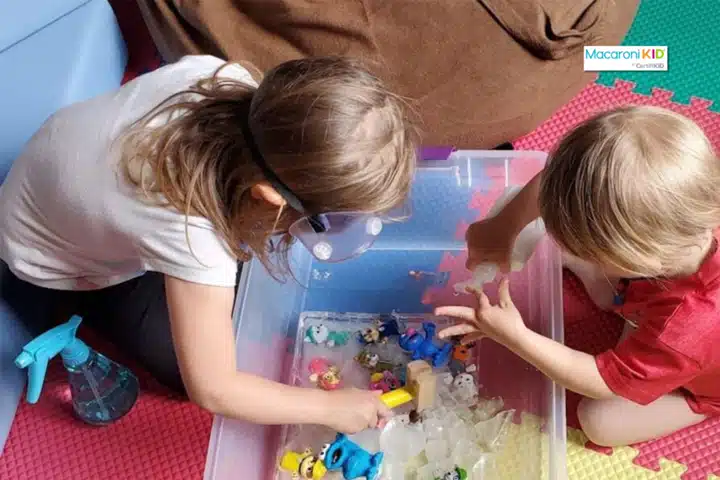
Materials Needed:
- Ice cube trays or small plastic containers
- Small toys (e.g., beads, buttons, figurines)
- Warm water, salt, droppers, and bowls
Set Up:
Freeze small toys in water overnight. Set up tools like salt, droppers, and warm water for the rescue.
Instructions:
Ask children to figure out how to melt the ice and free the toys. Let them try different tools and problem-solve in real time. This activity is packed with cognitive challenges that stimulate curiosity and critical thinking.
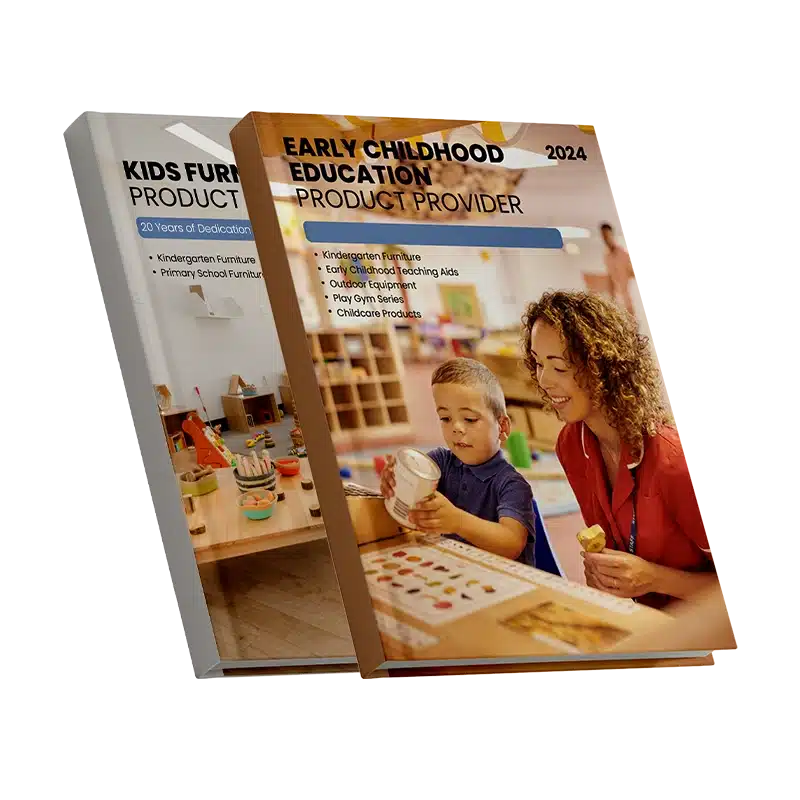
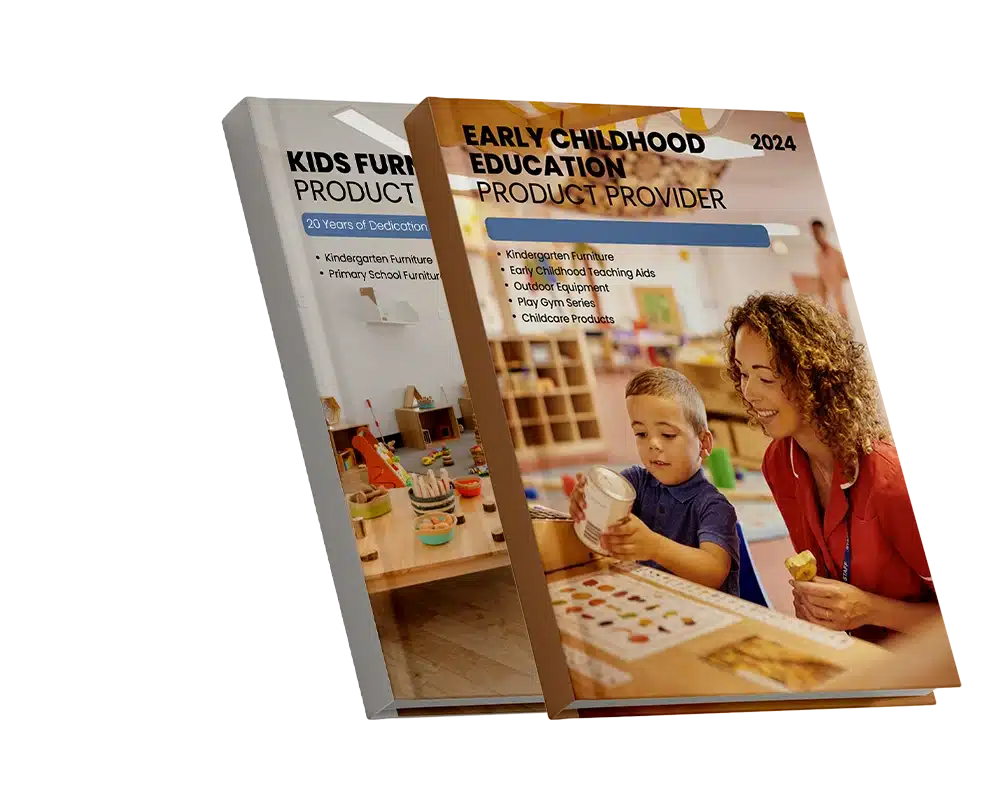
Key FAQs About Cognitive Development for Preschoolers
How does cognitive development affect student learning?
Cognitive development plays a foundational role in how children absorb, process, and apply information in a learning environment. During the preschool years, children are rapidly developing core cognitive functions like memory, attention, and reasoning — all of which are directly tied to academic readiness. When children engage in high-quality Cognitive Development Activities for Preschoolers, they learn how to follow instructions, solve problems, and stay focused during lessons. These skills affect everything from literacy and math performance to emotional regulation and classroom behavior. In short, strong early childhood cognitive development supports long-term academic success and confidence.
How do you promote cognitive development in a preschool setting?
Promoting cognitive growth in a preschool classroom starts with providing developmentally appropriate, hands-on experiences. Teachers can incorporate a wide range of Cognitive Development Activities for Preschoolers, such as puzzles, sequencing games, storytelling, sensory bins, and science experiments. These activities encourage curiosity, experimentation, and exploration — all of which are essential for healthy brain development. In addition, a structured environment that includes daily routines, open-ended play, and rich language interactions helps children build strong cognitive and language development pathways. Small group discussions, problem-solving tasks, and active movement games also contribute significantly to building cognitive awareness and flexibility.
What kind of cognitive skills can preschoolers develop?
Preschoolers typically develop a wide range of cognitive skills during early childhood. These include memory recall, attention control, problem-solving, classification, reasoning, and language comprehension. Through structured Cognitive Development Activities for Preschoolers, children also begin to understand sequencing, symbolic thinking, and cause-and-effect relationships. For example, completing a puzzle builds spatial reasoning, while listening to and retelling a story strengthens auditory memory and narrative skills. These cognitive examples reflect the foundation that supports future academic learning in reading, math, and science, as well as social-emotional growth.
What 3 factors can strengthen a child’s cognitive development?
Three key factors that significantly enhance a child’s cognitive development in early childhood are:
- Engaging Environment – A rich learning environment filled with varied cognitive activities such as puzzles, stories, open-ended play, and hands-on exploration encourages children to think deeply and solve problems independently.
- Responsive Adult Interaction – Adults who ask open-ended questions, model reasoning skills, and encourage conversation help children build cognitive and language skills.
- Consistent Routines and Structure – Predictable schedules, repetition, and consistent expectations support attention, sequencing, and memory — all vital parts of Cognitive Development Activities for Preschoolers.
When these three elements are present, children are far more likely to thrive cognitively and academically.
What strategies can be used to develop cognitive skills in preschoolers?
There are several effective strategies to support cognitive growth in young children. One of the most impactful methods is incorporating structured Cognitive Development Activities for Preschoolers into daily routines. These activities include memory games, storytelling, sorting, puzzles, and hands-on experiments that encourage children to think critically, solve problems, and stay focused.
Another important strategy is to create a language-rich environment, encourage children to ask questions, and give them time to explore freely through guided play. Simple activities like sorting, building, or playing “what happens next?” games also promote deeper thinking. By incorporating a variety of Cognitive Development Activities for Preschoolers into daily routines — both at home and in the classroom — caregivers can support meaningful brain development during the most critical years of early learning.
How often should I use Cognitive Development Activities for Preschoolers?
Ideally, Cognitive Development Activities for Preschoolers should be incorporated into daily routines. Even short 10- to 15-minute sessions, done consistently, can significantly improve attention span, language skills, and memory in young children over time.
Conclusion
Cognitive development in the preschool years is more than a phase — it’s the foundation of how a child will think, reason, and learn for years to come. The 30 thoughtfully selected Cognitive Development Activities for Preschoolers we’ve shared are designed to stimulate essential mental skills while keeping young learners engaged, curious, and motivated. Whether it’s through memory games, problem-solving tasks, creative storytelling, movement-based challenges, or sensory exploration, each activity supports specific areas of early childhood cognitive development — from memory and logic to language, motor coordination, and attention control. These activities aren’t just tools for today; they are investments in tomorrow’s learners, thinkers, and leaders.
That’s why choosing the right learning environment is just as important as the activities themselves. Spaces that are intentionally designed — safe, developmentally appropriate, and flexible — create the structure needed for real cognitive growth. In many preschool settings, the physical setup of the classroom can either support or limit a child’s ability to engage in meaningful cognitive tasks. That’s where trusted suppliers like Xiha Montessori come in. With a strong focus on manufacturing high-quality, purpose-built kindergarten furniture, they make it easier for educators to design classrooms that promote movement, hands-on interaction, and focused attention — the very conditions where Cognitive Development Activities for Preschoolers thrive.

